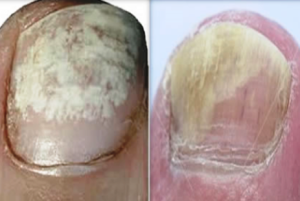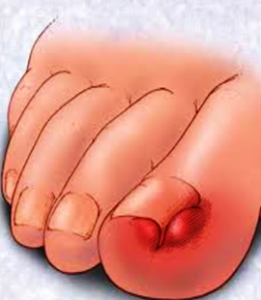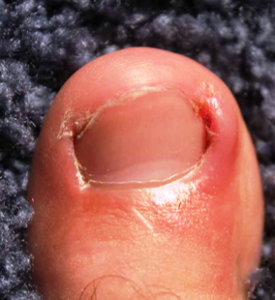Fungal Nails (Onychomyosis)
Onychomycosis also known as tinea unguium is a contagious fungal infection of the toe nails that affects about 6-8% of the adult population. Fungus infection in the toe nails account for almost half of all nails problems, with its incidence increasing with age.
These fungal infections can occur when one of a number of types of microscopic fungi gain entry (usually through a small trauma) to the nail, then grow and spread in the warm, moist environment inside socks and shoes.
Symptoms
Changes in the nails appearance, this can include
- Swelling, yellowing, thickening, roughness, or crumbling of the nail
- Streaks or spots down the side of the nail, and even complete loss of the nail. Toenail colour can vary from brown to yellow or white.
- There is generally no pain.
- Yellow to brown colour nails may also have a strange odor noted when they are cut
Treatment
At Sydney Foot Clinic, some of the treatment/management offered for fungal nails include;
- Accurate diagnosis
- Recommending appropriate anti-fungal medication
- Cutting and filing the nial
- Education about foot nail care to prevent any further reoccurrence of the infection
Ingrown Toenails (Onychocrytosis)
When a toenail is ingrown, it is curved and grows into the surrounding skin as the nail grows. This ingrowing of the nail irritates the skin, often creating pain, redness, swelling, and warmth in the toe.
The term “ingrown toenail” is often used to describe a number of problems that lead to pain and discomfort around the nails despite the fact that in many cases the nail does not actually “grow” in to the skin around it. These problems most commonly occur on the big toe, however, smaller toes can also be affected.
Symptoms
Some common symptoms associated with ingrown toenails include;
- Pain along the side of the nail
- Swelling, warmth and redness of the toe
- Presence of fluid or pus
Causes
Some common causes of ingrown toenails include;
- Improper cutting of nails – most common cause of ingrown toe nails.
- Poor fitting footwear – tight shoes
- Hereditary – involuted (curved toe nail)
- Trauma – dropping something on your toe, stubbing your toe or activities that require repeated pressure on your toes (kicking, running)
Treatment
The best way to reduce the pain of an ingrown toenail and the associated infection, is to have the irritating portion of the nail removed by a podiatrist. If this irritation is not removed, then infections (and pain) caused by ingrown toenails often return.
Those who have a medical infection such as diabetes or poor circulation, an ingrown nail infection can put them at high risk and it is extremely important they seek medical attention from a podiatrist.
At Sydney Foot Clinic the following treatments are offered for ingrown toe nails;
- Conservative/preventative measures – cutting and removing the offending nail spicule
- Surgical measure – a minor procedure that is performed under local anaesthetic for reoccurring ingrown toe nails Partial Nail Avulsion (PNA) (click for more info)



